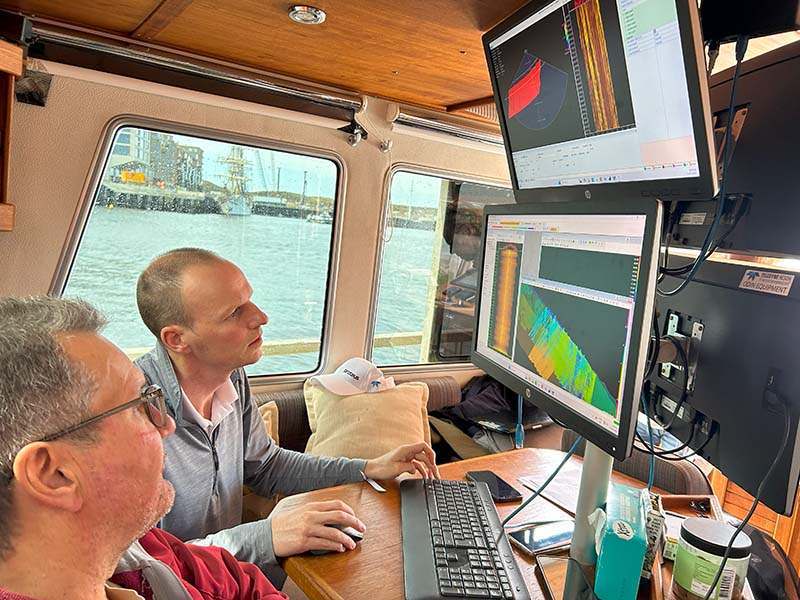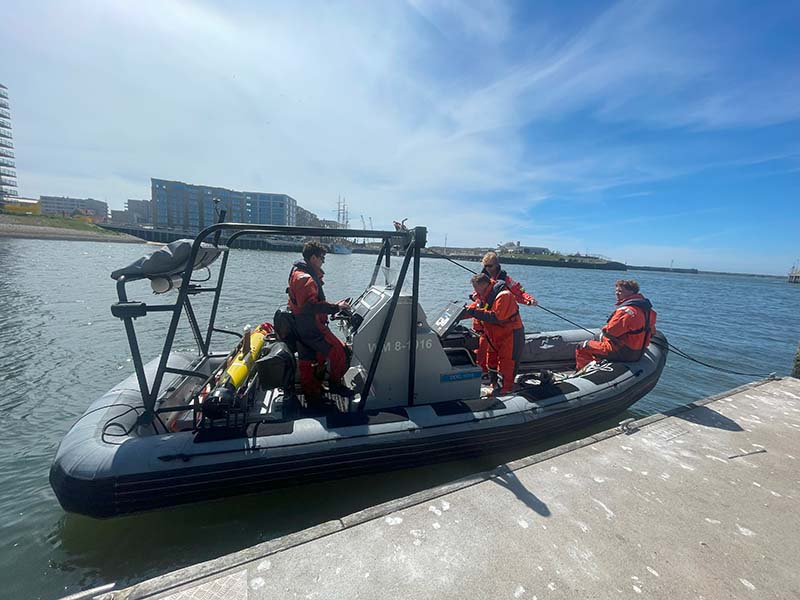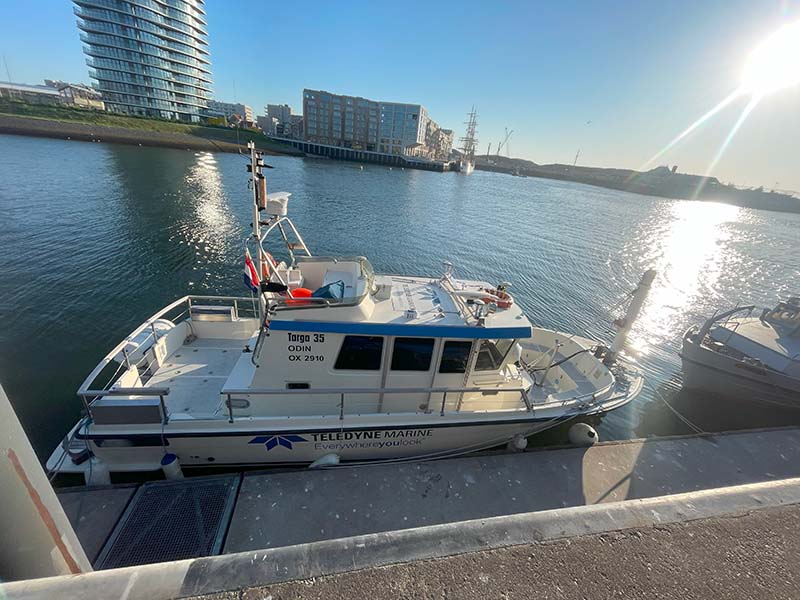Showcasing Cutting-Edge Technology in Realistic Maritime Security Scenarios
 Teledyne Marine, in collaboration with Teledyne Geospatial, is proud to announce its participation in the SeaSEC Challenge 2025 (SCW25), an advanced maritime security event that brings together industry leaders to test and validate technologies in realistic underwater threat scenarios. As part of its continued commitment to innovation and safeguarding critical underwater infrastructure, Teledyne Marine is engaging in all three of SeaSEC's core challenges.
Teledyne Marine, in collaboration with Teledyne Geospatial, is proud to announce its participation in the SeaSEC Challenge 2025 (SCW25), an advanced maritime security event that brings together industry leaders to test and validate technologies in realistic underwater threat scenarios. As part of its continued commitment to innovation and safeguarding critical underwater infrastructure, Teledyne Marine is engaging in all three of SeaSEC's core challenges.
“SeaSEC provides an exciting opportunity to verify our technologies in operationally relevant conditions, collaborate with partners, and contribute to the broader maritime security community,” said Morten Bernsdorf, Teledyne Marine’s Project Lead.
“It also challenges us to adapt and innovate under realistic constraints – gaining valuable insights that help us refine and advance our systems.”
With a broad portfolio of marine technologies, Teledyne Marine is well-positioned to deliver integrated solutions across diverse maritime applications, such as those in the three SeaSEC challenges.
SeaSEC Challenge #1: Sea What’s There
 In this scenario participants are required to detect and track potentially uncooperative underwater vehicles in real time.
In this scenario participants are required to detect and track potentially uncooperative underwater vehicles in real time.
Teledyne Marine will deploy its
Passive Acoustic Monitoring (PAM) system to detect sound from the suspected AUV within a 1x1 km search area. Once identified, the team will use the
SeaBat 7123 forward looking sonar to visually locate and continuously track the AUV. Real-time data will be transmitted to Teledyne Marine’s onshore communication centre demonstrating how its integrated acoustic and
sonar technologies can be used to respond rapidly to covert underwater threats.
SeaSEC Challenge #2: No Pipe to Lose
 This second challenge requires participants to locate and classify threats placed near buried or unburied pipelines.
This second challenge requires participants to locate and classify threats placed near buried or unburied pipelines.
Within the designated 1-hour mission window, Teledyne Marine will deploy its
Gavia AUV equipped with the
SeaBat T20 multibeam sonar to search for and identify multiple objects of interest located on, near, or beneath a stretch of pipeline. Using the
SeaBat T51 Teledyne Marine will perform the same challenge both on a survey vessel and on a USV.
In parallel, harbour-based testing with a trencher fitted with Teledyne Marine’s
HydroPACT pipe tracker will support detection of buried threats. Combined with two
Teledyne Blueview sonars to navigate the trencher. Collected data will be processed and transmitted in near real-time to the Teledyne Marine’s shoreside communications center, enabling rapid threat assessment and response.
SeaSEC Challenge #3: Fishy Finds
In the third scenario, participants are tasked with detecting anomalies on the seabed that could signal sabotage or intrusion. To do this, they compare newly collected data with previously mapped data from the same area. The initial mapping data was provided by Teledyne Marine in support of SeaSEC.
For the final challenge Teledyne Marine will deploy its SeaBat T51 both on the survey vessel and on an USV, alongside the
Gavia AUV with the SeaBat T20. These
multibeam sonars will be used to capture detailed data on the seabed, enabling Teledyne Marine to detect and classify disturbances such as trenching, anchor drag marks, or other unusual features indicative of recent activity.
The team will leverage Teledyne Geospatial’s lidar platform for additional support, ensuring comprehensive coverage and precise mapping. With the goal of maximising operational efficiency,
Teledyne Marine’s PDS software will enable near-real-time data processing, and any significant findings will be transmitted to Teledyne Marine’s communication centre onshore.
Teledyne Marine will also deploy a FLIR infrared camera positioned in the harbour to provide continuous visual monitoring of the offshore challenge zones up to 8 nautical miles out to sea. This live feed will support the SeaSEC core planning group - being the eyes on the water.
Teledyne Marine’s participation in SeaSEC is also a collaborative effort. The company is working alongside partners to bring multi-technology integration to life:
- Copenhagen Global, providing a USV platform fitted with Teledyne Marine equipment
- IHC, supplying a trencher equipped with
Teledyne Marine’s HydroPACT for subsea pipeline detection
In keeping with the international cooperation that defines SeaSEC – bringing together participants from six nations – Teledyne Marine’s team will share its performance with fellow civilian and military teams to support collective learning and cross-border collaboration in the protection of critical underwater infrastructure.
“Beyond technical validation, our team is keen to make a strong impression demonstrating the full scope of capabilities across sonar, AUV, hydrophones and more,” added Morten Bernsdorf.
“This commitment to SeaSEC reflects Teledyne Marine’s broader focus on advancing the tools and partnerships that help protect critical underwater infrastructure – a growing global priority in an increasingly connected maritime environment.”
SeaSEC Challenge 2025 runs from 12-23 May at SeaSEC’s maritime testing grounds off the coast of Scheveningen, Netherlands. SeaSEC was founded in December 2023 by the Ministries of Defence of six nations with similar shallow-water coastlines along the Baltic Sea and the North Sea. SeaSEC encourages practical collaboration uniting the needs and responsibilities of infrastructure owners and operators, public stakeholders, industry and research on an international level. More information on SeaSEC is available
here🡥
